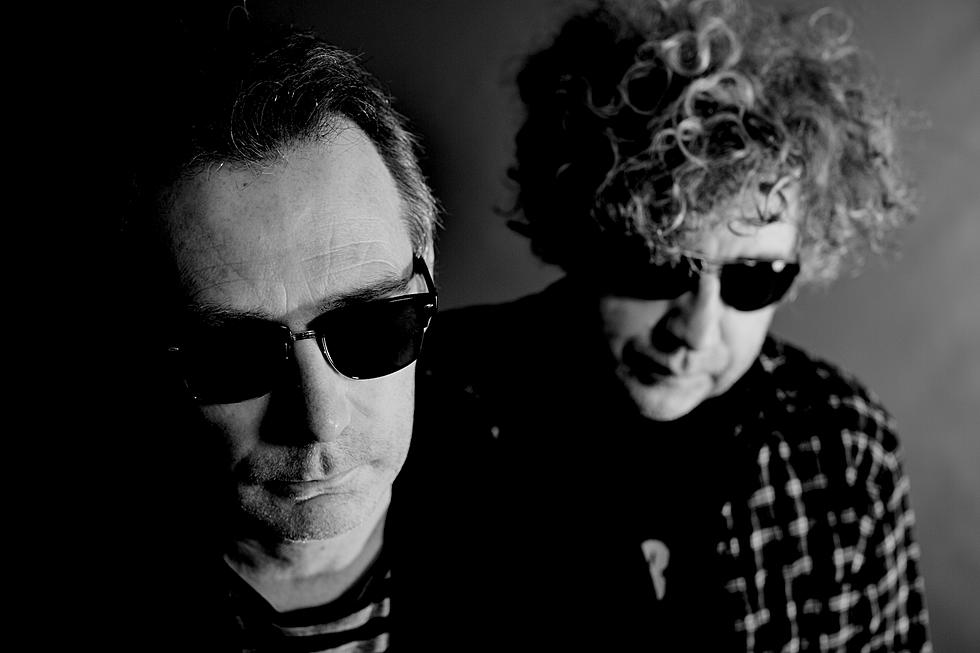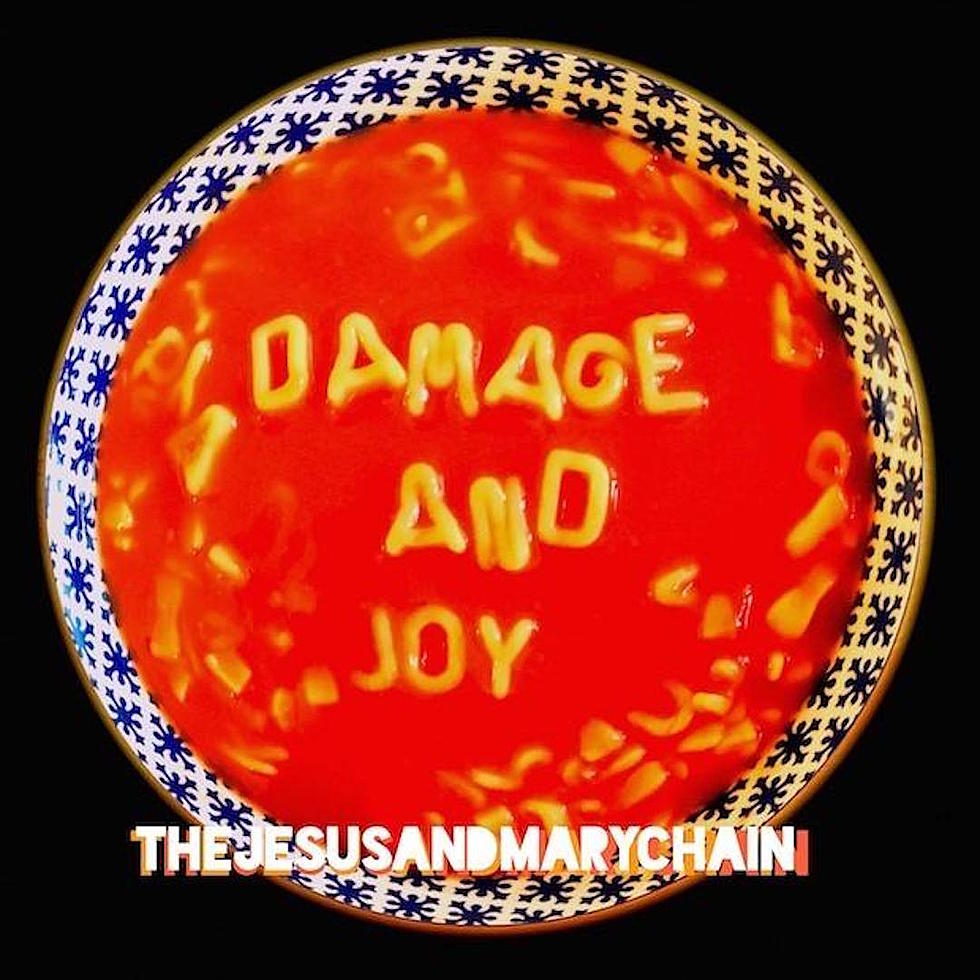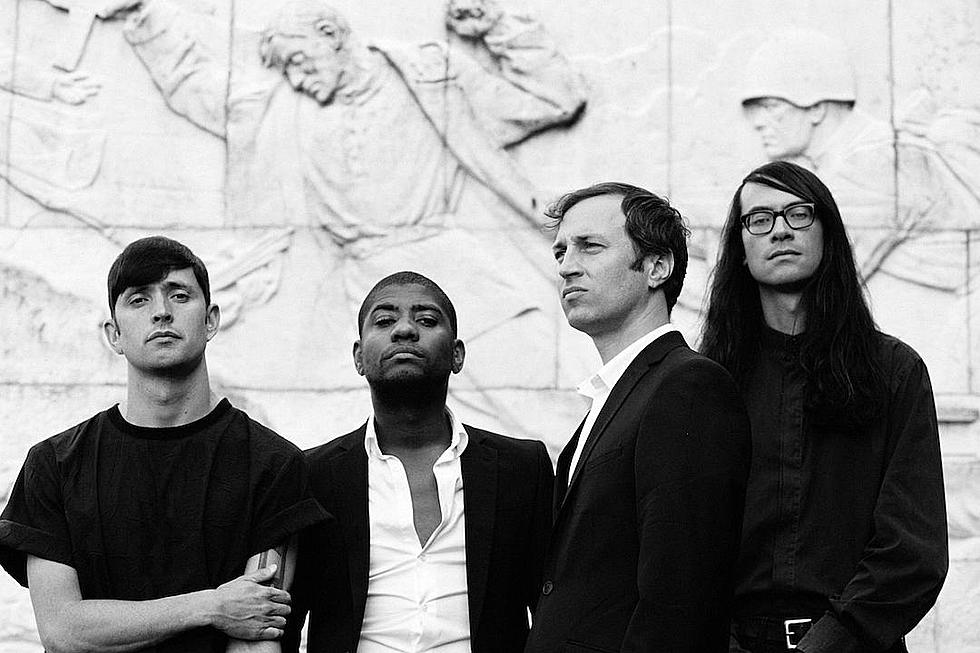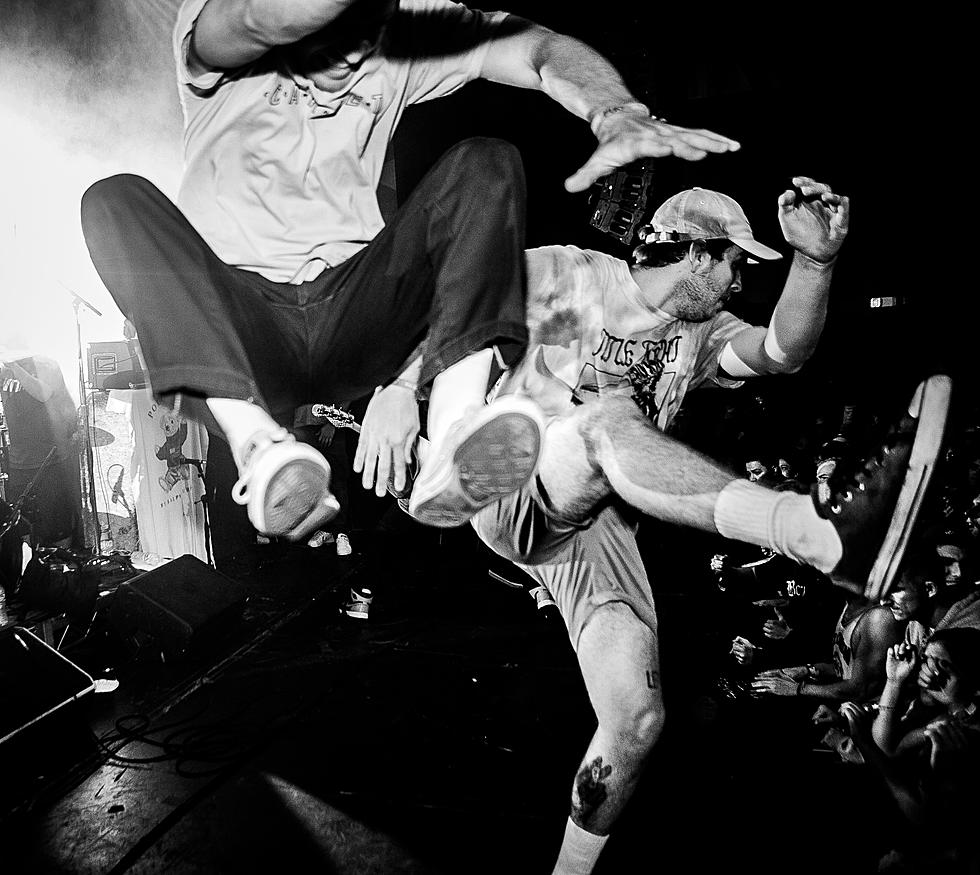
The Jesus and Mary Chain Peddle ‘Psychocandy’ to ‘NME’
Almost two years ago to the day, I stood at the edge of a widening mosh pit in Glasgow, Scotland, and watched elbows fly as the Jesus and Mary Chain surged through their debut album, Psychocandy, in full. It was my first time in Scotland, and the first time seeing the Mary Chain perform deep cuts from the seismic debut album they’d made nearly 30 years before, all for the purposes of my first book, a 33 ⅓ Series installment about Psychocandy. I’d loved this pummeling pop album for years, but my travels and research led me to appreciate it even more — especially when I learned about how these four young working-class men forged something spectacular out of nothing, confirming that all you need to flip the pop world upside down is a unique sound and the cojones to actually do it. And maybe a leather jacket, too. The book is out on Thursday, and you can buy it here. In the meantime, check out this exclusive CLRVYNT excerpt .
Chapter 7: Inside Me
At least at the beginning, there was no middleman: Starting from the ground up, the band did everything themselves. The Mary Chain was an autodidactic bunch, gathering materials on their own that would help them craft their image, aesthetic approach and performance style. The band created the interiors of their record sleeves, rounded up their friends for help, and took the photographs that would grace Psychocandy’s front cover in Jim and William’s shared bedroom in East Kilbride. (“Marc Bolan didn’t have to stuff the sleeves of his own records,” Jim remembers grumbling at one point.) They spent many late nights at Alan McGee’s flat in Tottenham wrapping up records in plastic bags, remembers Karen Parker, Bobby [Gillespie]’s then-girlfriend and soon-to-be-unforgettable vocalist on “Just Like Honey.”
By June 1984, the young band had already signed to Creation. But at the time, “musicians” was a loose term to describe them, at best. Bassist Douglas Hart notoriously thumped his bass with two strings, one of which actually worked. “Two is enough; it’s adequate,” he would say to interviewers years later. “Anybody can play this bass.” William Reid played guitar because he could do it only slightly better than his brother Jim, which meant he could hardly play at all. “He could barely hold down a bar chord,” remembers Jim of William’s guitar playing at the beginning. As for William’s guitar? “It’s totally out of tune, because my guitar’s for kicking,” he told video interviewers in 1985. Bobby Gillespie had been screaming in his first industrial noise band before joining as the Mary Chain’s drummer (his “drum kit” was comprised of two trash can lids).
The younger, painfully shy Jim Reid had been relegated to the role of the band’s vocalist out of necessity because no one else would do it (he and William flipped a coin, and he “lost”). Originally, Jim tried to get Douglas — then the youngest member of the band, just a teenager — to sing. “I was like, 'Fuck, what?' I couldn’t believe it,” Hart recalls. “It was total shyness on his part. I was like, ‘Your voice is fucking amazing,' and he’s a good-looking bastard!”
Their attempts at performing live had been minimally successful thus far, and their audience typically comprised their friend / superfan Bobby Gillespie, Alan McGee and a few confused onlookers, most of whom left after several minutes. Though they were booted off the stage at a psychedelic club night at Alice in Wonderland (in London’s Soho) in September 1984, they decided that the next show (at another venue, of course) would be different. Perhaps it helps that before their first show at the Living Room, they marched into the New Musical Express offices in London and announced to the tastemaking writers and editors that they, the Mary Chain, had arrived.
“We went down and said, ‘We’re the Jesus and Mary Chain, we’re playing tonight [at the Living Room], and if you don’t come, you’re going to be pretending that you did in five years,’” Reid says. At first, McGee wasn’t too keen. “We explained to Alan that we were going down to the NME offices to invite them to the show. He was laughing and saying, ‘Fuck, that’s not how it works.’ But why isn’t it how it works?” says Jim Reid. “He was like, ‘You just can’t do that. They don’t know who you are.’ But we did it anyway.” Their boldness then caught the attention of an NME critic named David Quantick. This time, NME’s own Neil Taylor ended up going to their gig at the Three Johns on October 24, 1984. In his review, he touted the Mary Chain as “the best thing since the Sex Pistols.” This bit of press would prove critical to the band moving forward, even if the show itself was admittedly a mess.
McGee remembers that particular show dissolving into spectacular chaos. “I don’t even know how to describe it. Every single one of them ... Gillespie was sort of having a nervous breakdown as they played,” he told Barbed Wire Kisses’ author Zoë Howe. “Douglas Hart was … well, I don’t know what drug he was on, but he was, like, pinned to the wall. Jim was having an epileptic fit, William was on his knees, and then they proceeded to smash their instruments up. Gillespie — the guy barely drank, but he was drunk, manically drumming away.”
It was utterly punk to make something from nothing, and these chances are what made the Mary Chain. Even tensions bubbling up between the dueling brothers took a backseat to the Mary Chain mission. “We just had such a clear idea of, at the end of it, the words the Jesus and Mary Chain are going to be written on something,” Jim remembers. “We want to have control over that. It doesn’t have your name on the final product. It’s got our name. So, you know, we just want to make sure it’s done right.”
Part of what set the Mary Chain [apart] was their early understanding that maintaining creative control over their product, even when making the move to major labels later on, was crucial to maintain a sense of stability and purity. Speaking to this, Jim recalls a later story about going to film the video for “You Trip Me Up” in Portugal, which they planned so that it would be sunny (naturally, it rained virtually the entire time the Scotsmen were there). What they could control of their music and its marketing, they did — and sometimes, it wasn’t received all that well by others.
“It used to really annoy people how we were so hands-on. We edited the ‘You Trip Me Up’ video, and they were just so fucking annoyed with us,” remembers Jim. “We would just be randomly cutting up films and splicing them together, and they were so angry! And they would say, ‘Why don’t you go to the pub, and when you get back we’ll have edited your video?’ We would say, ‘No, you got it wrong. You go to the pub, we’ll have edited the video.’ That was our attitude, you know? We did everything ourselves.”
Regardless, the Mary Chain would be consistently painted in the press as a group of self-indulgent, lazy retromaniacs. Due to their seemingly uncaring attitude and onstage antics, the Jesus and Mary Chain were almost immediately dubbed “Sex Pistols 2.0” by the British press upon the release of their first single in November 1984. The nickname was damning, and nods to the fellows’ polarizing performances, the band’s monosyllabic radio and television interviews and, of course, their ungodly name. They hadn’t even released a full album, and they were already pissing people off.
In a 1986 Rolling Stone profile, Jim Reid grumbled, “We’ve been taken hold of by the media as if we were some kind of plaything. To a certain extent, we played up to that in the beginning. But it got to the point where we were being portrayed as drunken idiots. It’s completely untrue. Just because the music is loaded doesn’t mean we’re loaded.” Instead of being strung out and loaded on heroin, the Mary Chain’s idea of “loaded” was more along the lines of the eponymous myth that wrought the Velvet Underground’s final record, Loaded, a tongue-in-cheek decision made by Lou Reed at the insistence of a producer who urged the then-Velvets to make a record that was “loaded” with hits. "Loaded," of course, can also refer to a gun with a trigger ready to be pulled.
More From CLRVYNT









